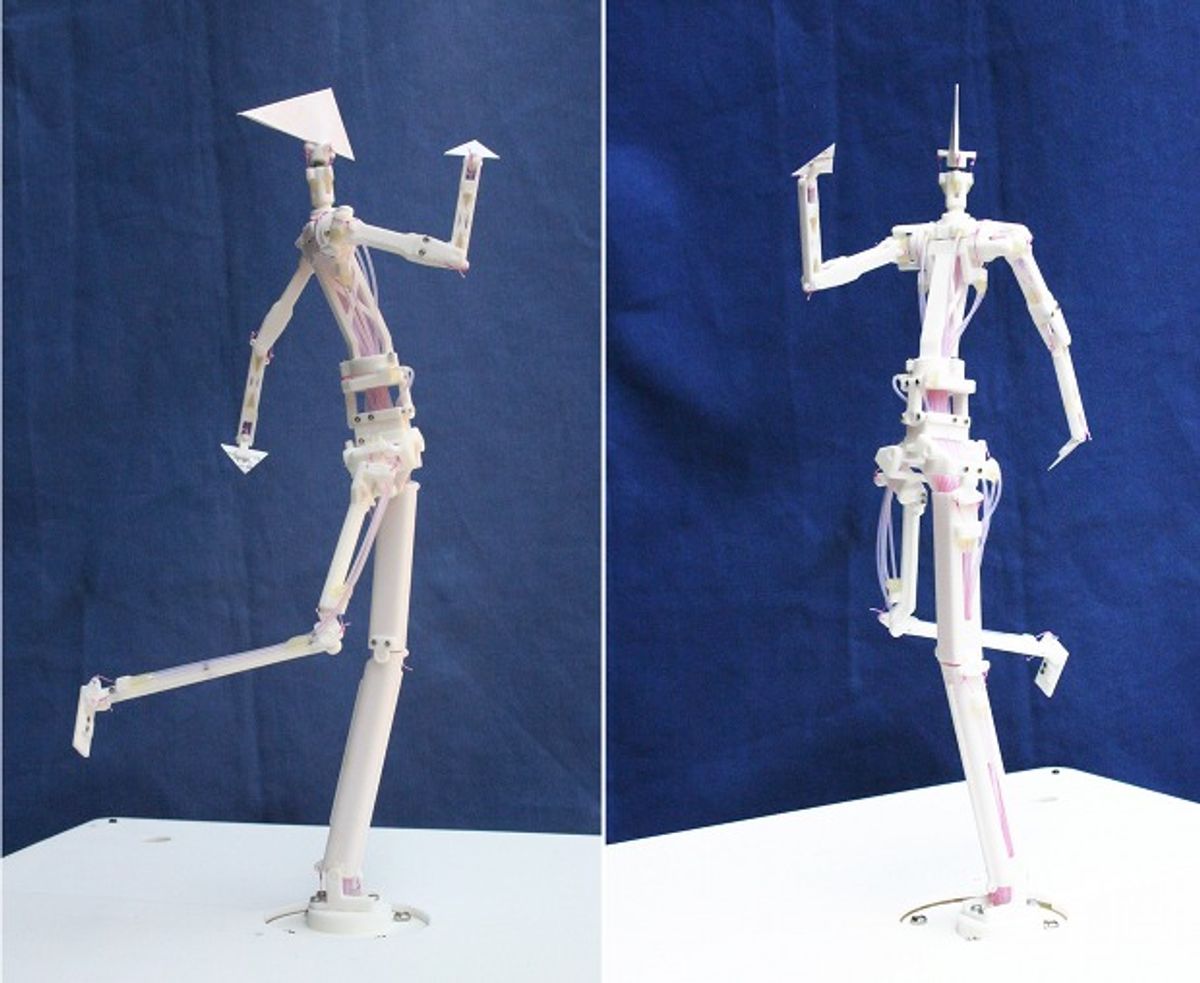Action figures that pose themselves may be the next big thing in Japan’s billion dollar plastic model industry. Speecys, a robotics company founded in 2001 by Tomoaki Kasuga (following a stint working on Sony’s robot dog Aibo), has unveiled what it calls the world’s first “Motion Figure” system.
The company’s MF-201 prototype consists of a 25-centimeter-tall human-shaped skeleton complete with 20 wire-driven joints, which allow it to move its head, arms, legs, and torso. The wires are threaded through the body and down one of the legs, which acts as the figure’s primary support. From there, the wires are fed into a box that conceals a set of servo motors as well as Bluetooth LE, Wi-Fi connectivity, speakers, and sensors. It’s basically the modern day version of the traditional Japanese puppet, or karakuri.
Speecys wants to partner with major manufacturers to market the MF-201 along with a line of exchangable plastic accessories, such as detachable heads and body parts, based on pop culture icons. Consumers could easily construct hundreds of different characters from animated television shows, movies, games, and comic books. Software would be included that would make it easy to create and play back various poses, dances, and catchphrases. The Motion Figure system might greet you when you sit at your desk and read you the news or messages from your social networks.
More advanced features, such as face and speech recognition, have already been implemented in Speecy’s earlier robots, which include small humanoids (the most advanced is called SPC-101). None of these robotics creations, however, could duplicate the success of Sony’s Aibo. Still, Speecys hopes to bring the Motion Figure system to market at a price ranging from 50,000 to 100,000 yen (about US $500 to $1000). That may sound expensive, but it’s a price many otaku would happily pay for something that could become the jewel of their plastic model collection.
[ Speecys ] via [ Japan Trends ]



